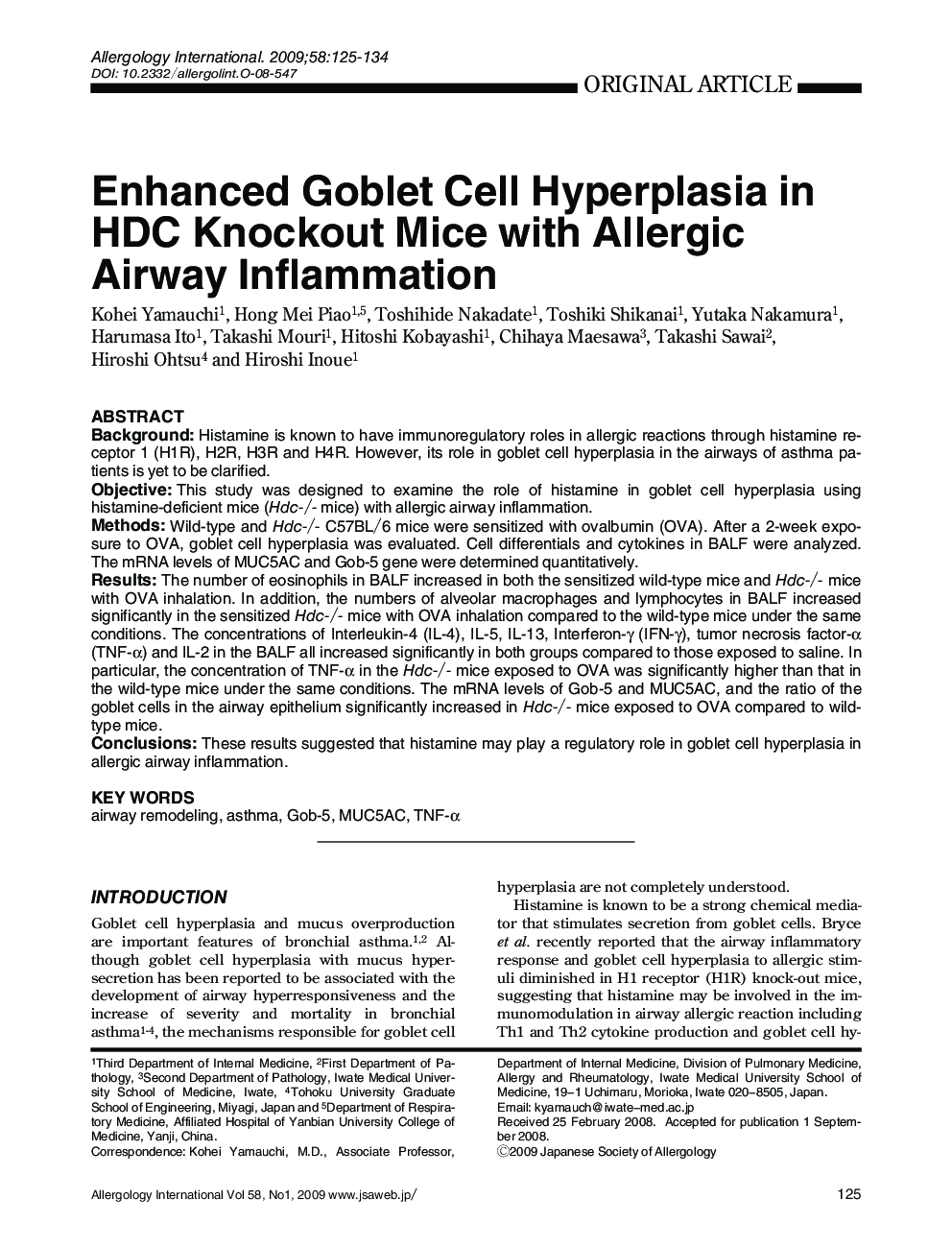| Article ID | Journal | Published Year | Pages | File Type |
|---|---|---|---|---|
| 3341187 | Allergology International | 2009 | 10 Pages |
ABSTRACTBackgroundHistamine is known to have immunoregulatory roles in allergic reactions through histamine receptor 1 (H1R), H2R, H3R and H4R. However, its role in goblet cell hyperplasia in the airways of asthma patients is yet to be clarified.ObjectiveThis study was designed to examine the role of histamine in goblet cell hyperplasia using histamine-deficient mice (Hdc-/- mice) with allergic airway inflammation.MethodsWild-type and Hdc-/- C57BL/6 mice were sensitized with ovalbumin (OVA). After a 2-week exposure to OVA, goblet cell hyperplasia was evaluated. Cell differentials and cytokines in BALF were analyzed. The mRNA levels of MUC5AC and Gob-5 gene were determined quantitatively.ResultsThe number of eosinophils in BALF increased in both the sensitized wild-type mice and Hdc-/- mice with OVA inhalation. In addition, the numbers of alveolar macrophages and lymphocytes in BALF increased significantly in the sensitized Hdc-/- mice with OVA inhalation compared to the wild-type mice under the same conditions. The concentrations of Interleukin-4 (IL-4), IL-5, IL-13, Interferon-γ (IFN-γ), tumor necrosis factor-α (TNF-α) and IL-2 in the BALF all increased significantly in both groups compared to those exposed to saline. In particular, the concentration of TNF-α in the Hdc-/- mice exposed to OVA was significantly higher than that in the wild-type mice under the same conditions. The mRNA levels of Gob-5 and MUC5AC, and the ratio of the goblet cells in the airway epithelium significantly increased in Hdc-/- mice exposed to OVA compared to wild-type mice.ConclusionsThese results suggested that histamine may play a regulatory role in goblet cell hyperplasia in allergic airway inflammation.
